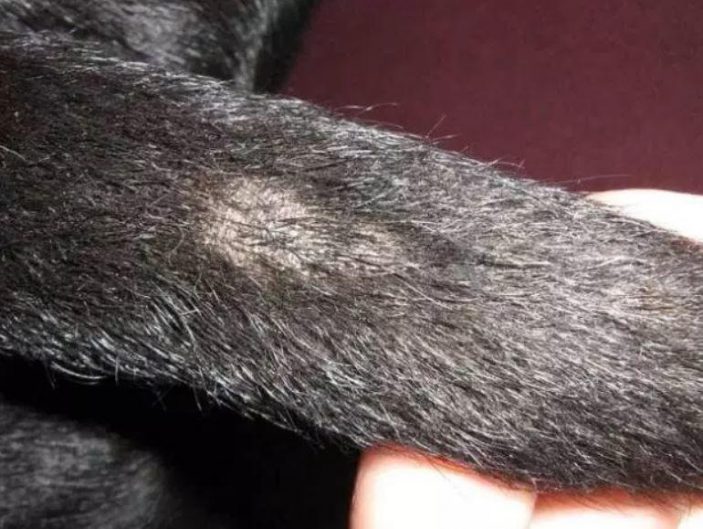Meaning
Stud tail in cats is also referred to as supracaudal gland hyperplasia or feline tail gland hyperplasia refers to a rare skin condition that mainly occurs due to overactive sebaceous glands.
This condition commonly affects intact male cats but can also affect neutered ones as well as some female ones.
Causes
Stud tail is caused by overactive sebaceous glands located near the base of the tail that produces an excessive amount of sebum.
Under normal circumstances, the oil or sebum keeps the tail hair soft and supple. However, excessive production of sebum makes it waxy and oily (wax and oil accumulate). The “accumulation of sebum that results in a buildup of hair, scales and resultant crusting.” [1]
Like in the case of human beings whereas they enter puberty, they produce excess sebum, a similar scenario may occur to your feline pal. As Purrinlot.com notes, “cats, like humans, produce excessive oil when growing into adults, but secrete that oil via the base of the tail rather than the face.”
Furthermore, it can reappear any time just like it happens in human beings. Symptoms
Symptoms of this condition can be mild or severe and will worsen if not treated in time or left untreated. Here are the common signs that signify the presence of supracaudal gland hyperplasia.
- Greasy hair at the base of the tail
- Missing hair or hair loss at this area
- Presence of comedones on the skin around this area
- A waxy substance on the skin surface at the base of the tail
- A foul odor
- Presence of cat skin infection around the tail base
Diagnosis
“Diagnosis is based on physical examination and the presence of typical symptoms at the base of the tail.” [2] This can help to rule out causes such as pockets of fleas and bite wounds

In serious cases, your vet may recommend the use of biopsies to help distinguish this condition from cancers or inflammations.
The vet may also ask you several questions in addition to the physical examination and biopsy in a bid to determine the underlying cause. Even though diagnosis here fundamentally depends on the physical examination, the diagnosis should always be done by a professional.
Stud tail cat treatment
Since this is predominantly a cosmetic issue unless that area develops an infection or becomes inflamed.
The treatment is by primarily improving the hygiene and removal of the resultant debris in this area. Use over the counter products to wash the area to avert the build-up of debris or the accumulations of oils.
For instance, “using an anti-seborrheal shampoo regularly will prevent the buildup of oily accumulations of sebum. It is also important to prevent the buildup of matted hair,” [1]. For mild cases, you can use topical ointment such as benzoyl peroxide.
An excellent choice is the Davis Benzoyl Peroxide Medicated Dog & Cat Shampoo. This benzoyl peroxide shampoo will degrease your cat, help in hair follicle flushing and opening and provide relief in dermatitis and demodectic mange
There are also more OTC products that can help to treat the oiliness, but you need to ensure they are safe and helpful like the Groomers Goop Creme for Oily Coats.
For severe symptoms, OTC products or some of the home natural products that could be used may be ineffective. Therefore, see a veterinarian for a thorough evaluation and treatment. Don’t wait until you notice discharges and odor smelling in your pet’s tail.
Among the treatments that the vet would recommend include topical and oral antibiotics, immunosuppressants medications, steroids and even the use of clippers to remove the hair from the affected area.
During recovery, avoid infections. Any infection may go away after a few weeks of treatment.
Note that during recovery, “these cats will need your long-term help to keep the area clean and treated. It is important that you schedule follow up appointments with your vet to avoid any further discomfort or infection for your cat,” [3]
Prevention
Since it often affects intact, adult male, neutering male cats may reduce occurrence instances. Also, consult with your veterinarian for further advice.
Summary
Oily tails in cats is usually a mild skin problem in felines but can be very severe if infections are involved. Do not ignore this condition if you notice it and, do not hesitate to consult a vet whenever you suspect that the remedies you are trying are ineffective.
